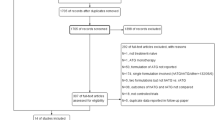Abstract
Acquired severe aplastic anaemia (AA) is a serious condition caused by immune-triggered bone marrow failure. For patients not eligible for bone marrow transplantation, treatment of choice is immunosuppression by a combined treatment with antithymocyte globulin (ATG) and cyclosporine. The debate on treatment optimization in AA is focused on conflicting data regarding ATG preparations from horse (h-ATG) versus rabbit (r-ATG), recently favouring h-ATG. H-ATG has been withdrawn from the European market in 2007. Reimbursement for imported preparations from outside Europe is frequently denied in negotiations with statutory health insurance companies. This raises the question of whether h-ATG is cost effective and a sensible investment with regard to healthcare budgets as well as patient health. We modelled the cost effectiveness of r-ATG versus h-ATG based on a recent randomized trial and cost data provided by the hospital pharmacy of Jena University Hospital. We calculated the amount of life years gained and the average incremental costs per life year gained when comparing h-ATG and r-ATG. Our calculations revealed average incremental costs per life year gained of €11,033.80 for the examined patient population treated with h-ATG when compared to r-ATG. Assuming a cost effectiveness threshold of €25,000–35,000 per life year gained, our calculations demonstrate cost effectiveness of h-ATG as compared to r-ATG.
Similar content being viewed by others
References
Marsh JC, Ball SE, Cavenagh J et al (2009) Guidelines for the diagnosis and management of aplastic anaemia. Br J Haematol 147(1):43–70. doi:10.1111/j.1365-2141.2009.07842.x
Thomas ED, Storb R, Fefer A et al (1972) Aplastic anaemia treated by marrow transplantation. Lancet 1(7745):284–289
Speck B, Gluckman E, Haak HL et al (1977) Treatment of aplastic anaemia by antilymphocyte globulin with and without allogeneic bone-marrow infusions. Lancet 2(8049):1145–11484
Schrezenmeier H, Brümmendorf T, Linkesch W et al. (2012) Aplastische Anämie–Diagnostik und Therapie der erworbenen Aplastischen Anämie. Leitlinie. http://www.dgho-onkopedia.de/de/onkopedia/leitlinien/aplastische-anaemie-diagnostik-und-therapie-der/aplastische-ana-mie-diagnostik-und-therapie-der.pdf. Accessed 29 Nov 2012
Aljurf M, Al-Zahrani H, Van Lint MT et al (2012) Standard treatment of acquired SAA in adult patients 18–40 years old with an HLA-identical sibling donor. Bone Marrow Transplant advance online publication. doi:10.1038/bmt.2012.223
Dufour C, Svahn J, Bacigalupo (2012) Front-line immunosuppressive treatment of acquired aplastic anemia. Bone Marrow Transplant advance online publication. doi:10.1038/bmt.2012.222
Passweg JR, Marsh JC (2010) Aplastic anemia: first-line treatment by immunosuppression and sibling marrow transplantation. Hematology Am Soc Hematol Educ Program 2010:36–426
Passweg JR, Socié G, Hinterberger W et al (1997) Bone marrow transplantation for severe aplastic anemia: has outcome improved. Blood 90(2):858–864
Frickhofen N, Heimpel H, Kaltwasser JP et al (2003) Antithymocyte globulin with or without cyclosporin A: 11-year follow-up of a randomized trial comparing treatments of aplastic anemia. Blood 101(4):1236–1242
Atta EH, Dias DSP, Marra VLN et al (2010) Comparison between horse and rabbit antithymocyte globulin as first-line treatment for patients with severe aplastic anemia: a single-center retrospective study. Ann Hematol 89(9):851–859. doi:10.1007/s00277-010-0944-y
Halkes CJ, Brand A, von dem Borne PA et al (2011) Increasing the dose of rabbit-ATG does not lead to a higher response rate in the first-line treatment of severe aplastic anaemia. Bone Marrow Transplant 46(suppl):373
Marsh JC, Socié G, Tichelli A et al (2011) Prospective phase 2 pilot study of rabbit antithymocyte globulin with ciclosporin for patients with acquired aplastic anaemia and matched pair analysis with patients treated with horse ATG and ciclosporin. Bone Marrow Transplant 46(suppl):S30
Afable MG, Shaik M, Sugimoto Y et al (2011) Efficacy of rabbit anti-thymocyte globulin in severe aplastic anemia. Haematologica 96(9):1269–1275. doi:10.3324/haematol.2011.042622
Vallejo C, Colado E, Montesinos P et al (2009) Comparison between lymphoglobuline- and thymoglobuline-based immunosuppressive therapy as first-line treatment for patients with aplastic anemia. Blood 114(suppl):3194
Atta EH, de Sousa AM, Schirmer MR et al (2012) Different outcomes between cyclophosphamide plus horse or rabbit antithymocyte globulin for HLA-identical sibling bone marrow transplant in severe aplastic anemia. Biol Blood Marrow Transplant 2012. doi:10.1016/j.bbmt.2012.07.004
Scheinberg P, Nunez O, Weinstein B et al (2011) Horse versus rabbit antithymocyte globulin in acquired aplastic anemia. N Engl J Med 365(5):430–438. doi:10.1056/NEJMoa1103975
Novitzky N, Mobara G, Jacobs P (1992) Antilymphocyte globulin and high-dose methylprednisolone improve survival in patients with aplastic anaemia without additional financial costs. S Afr Med J 81(5):257–257
Schommer JC, Pathak DS, Grauer DW (1996) Economic evaluation of immunosuppressive drugs: an empirical example using a secondary database of hospital charges. Transplant Proc 28(2):906
Shereck EB, Deyell RJ, Kurre P (2011) Costs and consequences of immunosuppressive therapy in children with aplastic anemia. Haematologica 96(6):793–795
Ubel PA, Hirth RA, Chernew ME et al (2003) What is the price of life and why doesn’t it increase at the rate of inflation? Arch Intern Med 163(14):1637–1641. doi:10.1001/archinte.163.14.1637
National Institute for Health and Clinical Excellence (2008) Guide to the methods of technology appraisal http://www.nice.org.uk/media/B52/A7/TAMethodsGuideUpdatedJune2008.pdf Accessed 30 Aug 2012
Tichelli A, Schrezenmeier H, Socié G et al (2011) A randomized controlled study in patients with newly diagnosed severe aplastic anemia receiving antithymocyte globulin (ATG), cyclosporine, with or without G-CSF: a study of the SAA Working Party of the European Group for Blood and Marrow Transplantation. Blood 117(17):4434–4441. doi:10.1182/blood-2010-08-304071
Tengs TO (2004) Cost-effectiveness versus cost-utility analysis of interventions for cancer: does adjusting for health-related quality of life really matter? Value Health 7(1):70–78. doi:10.1111/j.1524-4733.2004.71246.x
Acknowledgments
SH is supported by the Center for Sepsis Control & Care (CSCC) funded by the German Ministry of Education and Research (BMBF), grant no 01 E0 1002.
Conflict of interest
The authors declare that they have no conflict of interest.
Author information
Authors and Affiliations
Corresponding author
Rights and permissions
About this article
Cite this article
Heublein, S., Wehner, F., Höchsmann, B. et al. Modelling cost effectiveness of horse antithymocyte globulin for treating severe aplastic anaemia in Germany. Ann Hematol 92, 825–830 (2013). https://doi.org/10.1007/s00277-013-1688-2
Received:
Accepted:
Published:
Issue Date:
DOI: https://doi.org/10.1007/s00277-013-1688-2




